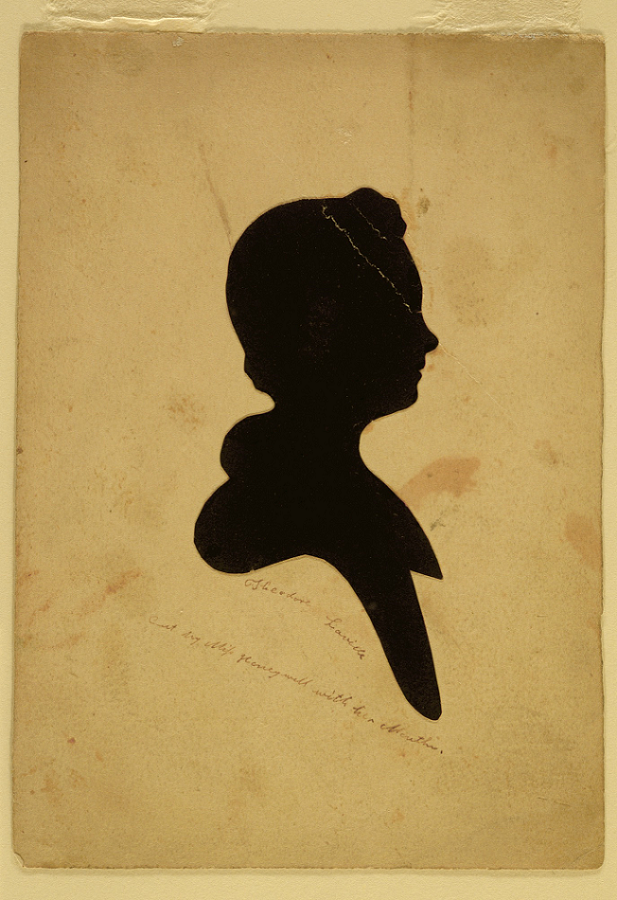Background
A silhouette is a type of profile portrait. It’s made by cutting the outline of a person’s face or body from paper and gluing it on paper of a different color. The result looks like a shadow cast against a wall. Silhouettes were the most popular kind of portrait in the early United States. They were made from simple materials and could be produced quickly, so all but the very poorest Americans could afford them. Silhouette artists only needed scissors, glue, and paper to make silhouettes, making it very easy for them to travel from town to town seeking clients. Even people who lived far from major cities had the chance to memorialize their loved ones this way. For these reasons, some historians call silhouettes the most democratic art form of the Federal period.
About the Image
At first glance, this is a typical example of an early American silhouette. But a closer look reveals that the signature says, “cut by Miss Honeywell with her mouth.” It was created by artist Martha Ann Honeywell. Martha was born without fully formed arms and with only three toes on one foot. From an early age, she adapted to her physical limitations and became a highly skilled artist. Martha was savvy enough to know that people were fascinated by how she created her art given her physical limitations, so she charged money to let audiences watch her work. Martha’s shows were so popular that she toured the United States, England, and Ireland, and she worked successfully for many decades.
Vocabulary
- Federal period: The early years of the United States, usually defined as 1790–1830.
- profile: The side view of something, such as a person’s face.
- silhouette: An artform that features the outline of a person, animal, or object placed against a contrasting background.
Discussion Questions
- Why do you think silhouettes were so popular? What does this tell us about people in the early United States?
- Why do historians consider silhouettes the most democratic art form of the Federal period?
- Why is it important to acknowledge that this work of art was made by an artist with a physical disability?
Suggested Activities
- To see another example of Martha’s work as well as a poster advertising one of her shows, visit the New-York Historical Society blog.
To learn more about what early American women did in their free time, see: American Cookery, Novel for a New Era, Observations of a New Nation, and Quilting. - People with disabilities have lived in every era of American history, and yet their stories are rarely included in historical narratives. Even in the cases of well-known historical figures with well documented disabilities (Harriet Tubman and Franklin D. Roosevelt), traditional textbooks often downplay that part of their lived experience. After learning about the life of Martha Ann Honeywell, ask your students to consider why this lack of inclusion is a problem, and what they can do to help address it (write to their local social studies council or school board to ask for more inclusion; create materials about historical stories of disability that can be shared in their school community, etc.).
- To learn more about the lives of American women with disabilities, see: Life Story: Margaret Corbin, Life Story: Dorothea Lange, Life Story: Harriet Tubman, and Life Story: Gertrude Ederle.
Themes
AMERICAN CULTURE







